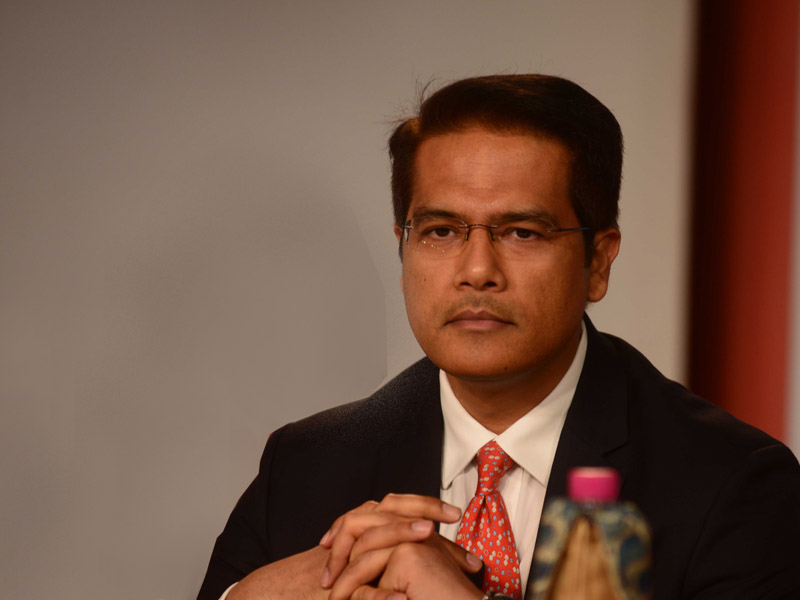'FII inflow to rise in H2CY19 after policy direction from govt in Union Budget'
Continued government push towards policy reform, further improvement in ranks of ease of doing business while maintaining fiscal discipline are key to achieving target of $5 trillion economy
 Image: Getty Images
Image: Getty Images
The return of the Modi government has been positive for capital inflows into the country. We do see inflows picking up in H2CY19 after we get policy direction from the government in the Union Budget, Vikas Dawra, Joint MD and CEO, Yes Securities said in an exclusive interview to Moneycontrol's Sunil Shankar Matkar.
Edited excerpts:
Q: How do you read Federal Reserve meeting given likely slowdown in the US next year?
A: The US Fed has sounded more dovish in the last policy meeting. It has indicated a possibility of a rate cut by as much as half a percent in the second half of the year. The market views a 100 percent probability of rate cut in the next meeting, with 66 percent participants expecting a 25 bps rate cut. This resonates well with our view as well.
We expect to see one additional 25 bps rate cut by the end of the year, however, the timing of the policy action will be data dependent.
Q: FII inflow has slowed down in the last few weeks. Is there any cause of concerns?
A: The return of the Modi government has been positive for capital inflows into the country. This partly has provided solace to the foreign investors regarding concerns around the NBFC crisis and liquidity squeeze faced by the financial institutions.
The RBI and the new finance minister, Nirmala Sitharaman, have taken a renewed interest in providing adequate liquidity to the market. The daily liquidity in early June has already turned to surplus from a deficit in May.
With this in the backdrop, we do see inflows picking up in H2CY19 after we get policy direction from the government in the Union Budget.
Q: How is the Indian investment banking scenario for FY20?
A: The key investment banking themes in FY20 would revolve around deleveraging (triggered by the tight liquidity environment) and distress asset deals (under IBC and also triggered by the tight liquidity environment) and growth capital funding (PE/VC) in high growth sectors including food and agri, logistics and warehousing, consumer/FMCG.
Towards the second half of the year, we expect to see a lot of capital market fund raising activity and also foresee financial institutions (Banks/NBFCs/MFI) raising equity capital.
Q: Given a slowdown in major sectors, what kind of reforms do you expect from the government to boost investments in the country?
A: The government should continue diluting its stake in the PSUs. This should be positive for the public private partnership. In order to revamp the dwindling urban and rural demand, direct and indirect benefit transfers to the rural sector and tax breaks for the middle-income class should be positive. This will boost investment demand, albeit with a lag.
In order to help the auto and housing sector, the government should provide adequate liquidity to the NBFC sector through a special liquidity window operated by the RBI. Providing a liquidity window to the NBFC has recently been discussed during a meeting between the Ministry of Finance and financial head honchos. In our view, we expect some policy response by the government during the Budget.
Q: Do you agree with the PM Modi that the Indian economy would be $5 trillion by 2024?
A: Even if the target is missed by a year or two, the key fundamentals of India's growth story remain intact. India will continue to grow strongly relative to most major economies. Continued government push towards policy reform, further improvement in ranks of ease of doing business while maintaining fiscal discipline are key to achieving this target.
Q: Do you think more infrastructure investment trusts (InvITs) will be set up in India given the focus towards improving India's infrastructure during Modi's second tenure?
A: Given the focus of Modi on infrastructure projects like highways, roads and railways, we certainly do see more InvITs being set up. An InvIT by its nature attracts long term yield investors who are relatively risk-averse and seek stable returns.
With InvIT, there is an efficiency gain in the method of investing in operating infrastructure assets. While this is a common method of investment by foreign institutions, Indian institutional investors like mutual funds, pension funds and insurance companies still hesitate and maintain a cautious approach to enter this niche market.
Original Source: https://www.moneycontrol.com/news/business/markets/fii-inflow-rise-after-union-budget-4131191.html